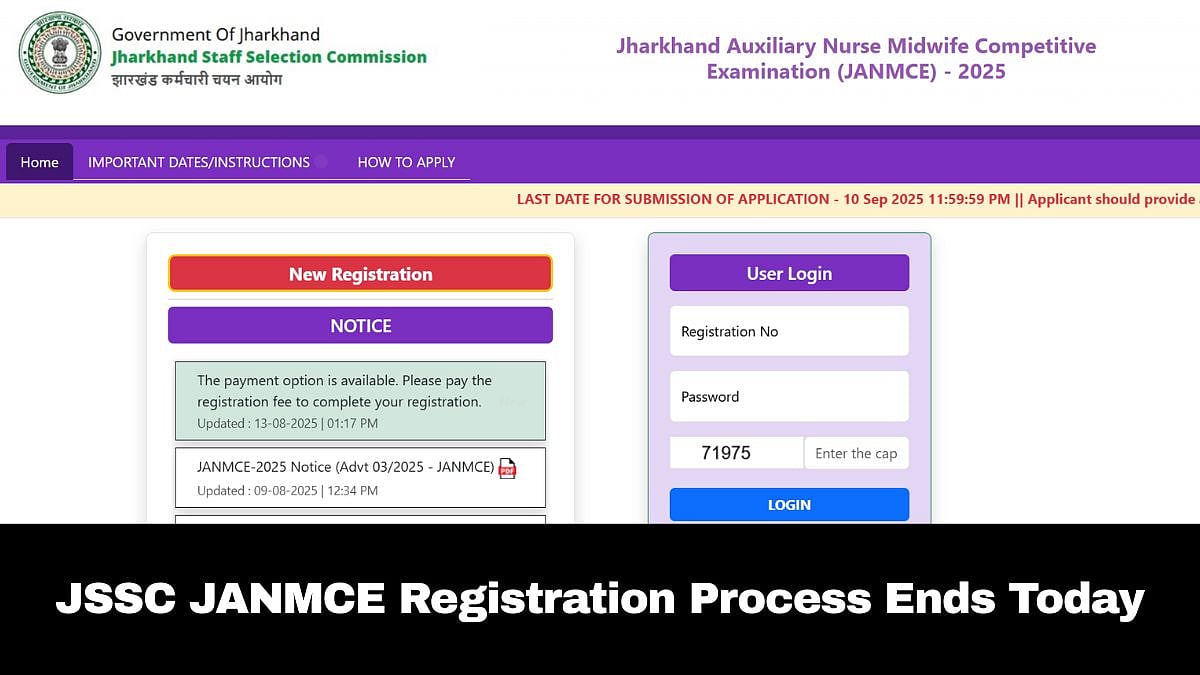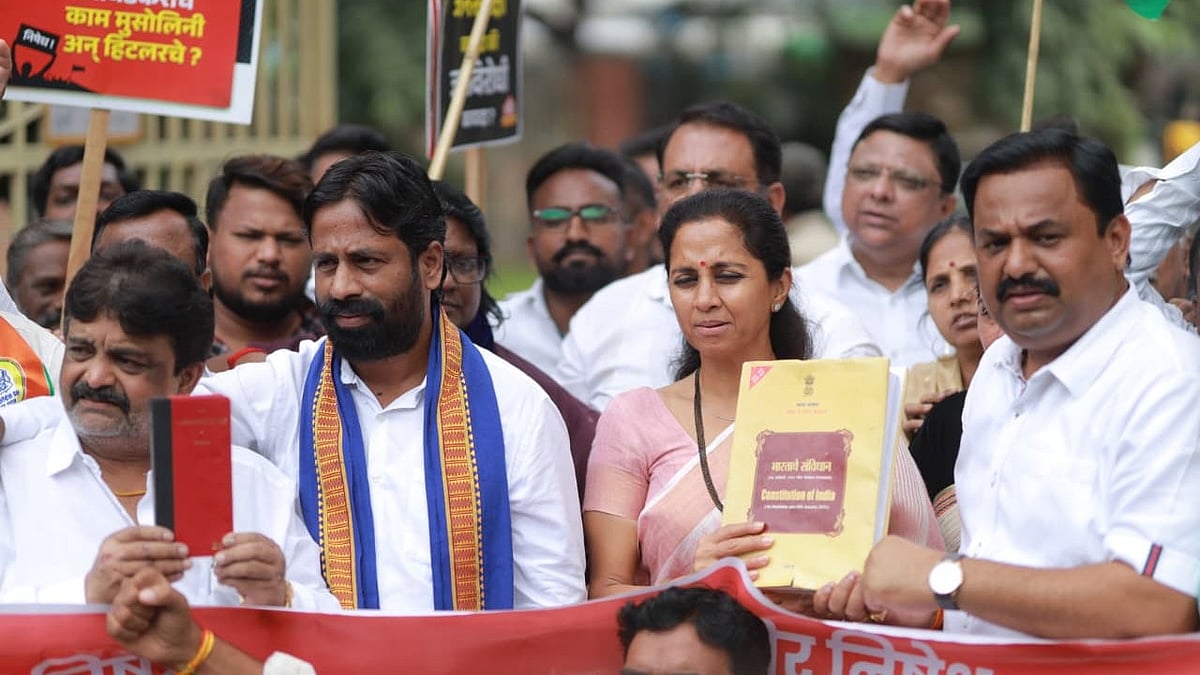The term “vomiting” describes the forceful expulsion of the contents of the stomach via the mouth or sometimes the nose, also known as emesis. Vomiting should not be confused with “regurgitation” which is a different condition from vomiting. Regurgitation usually means expulsion of the undigested food from the food pipe or esophagus into the mouth, with none of the forceful expulsion or discomfort that is associated with nausea. The two conditions are different as are their underlying causes. Vomiting is rarely painful, but never pleasant. Colloquially it is known as throwing up, retching, heaving, hurling, puking, tossing, or being sick.
Nausea is the discomfort that is felt before vomiting but not all nausea actually results in vomiting. Vomiting, like nausea, is a symptom rather than a disease in itself. Sometimes it is the body’s only way to eject a harmful or poisonous substance.
Usually, vomiting is harmless, but it can be a sign of a more serious illness. Some examples of serious conditions that may result in nausea or vomiting include concussions, meningitis (infection of the membrane linings of the brain), intestinal blockage, appendicitis, and brain tumors.
Another concern is dehydration. Adults have a lower risk of becoming dehydrated, because they can usually detect the symptoms of dehydration (such as increased thirst and dry lips or mouth). But young children have a greater risk of becoming dehydrated, especially if they also have diarrhea, because they often are unable to communicate symptoms of dehydration. Adults caring for sick children need to be aware of these visible signs of dehydration dry lips and mouth, sunken eyes, and rapid breathing or pulse. In infants, also watch for decreased urination and a sunken fontanelle (soft spot on top of the baby’s head).
Recurrent vomiting in pregnancy can lead to a serious condition called hyperemesis gravidarum in which the mother may develop fluid and mineral imbalances that can endanger their life or that of their unborn child.
Rarely, excessive vomiting can tear the lining of the esophagus, also known as a Mallory-Weiss tear. If the esophagus is ruptured, this is called Boerhaave’s syndrome, and is a medical emergency.
Common causes of vomiting include:
● Gastrointestinal infections like “stomach flu”
● Gastrointestinal disorders such as gastro esophageal reflux and peptic ulcer, irritable bowel syndrome, pancreatitis, gallbladder and liver disease
● Motion sickness and disorders of the inner ear
● Morning sickness associated with pregnancy
● Medications including cancer chemotherapy
● Intense pain
● Emotional stress (such as fear)
● Food poisoning
● Overeating
● A reaction to certain smells or odors
● Heart attack
● Concussion or brain injury
● Brain tumor
● Ulcers
● Some forms of cancer
● Bulimia or other psychological illnesses
● Gastroparesis or slow stomach emptying (a condition that can be seen in people with diabetes)
● Ingestion of toxins or excessive amounts of alcohol
● Migraines
● Labyrinthitis, which also causes dizziness and a feeling of spinning (vertigo)
● Certain medicines, such as antibiotics and opioid painkillers
● Kidney infections and kidney stones.
● A blockage in your bowel, which may be caused by a hernia or gallstones
There are different types of vomiting. Some people get the dry heaves, where you retch and feel like vomiting, but nothing comes out of your stomach. Blood streaked or bloody vomit usually indicates a cut or scrape to the esophagus or stomach. Some vomit resembles coffee grounds. Vomit that looks like coffee grounds occurs when stomach acids and blood congeal gastro esophageal.
Coffee ground vomit can be a sign of ulcer, Reflux disease (GERD), cancer of the stomach or liver, or other abdominal conditions. Yellow vomit indicates the presence of bile, which usually happens after a meal.
It’s rare, but people with abnormal intestinal function could possibly vomit up partially digested food or feces. Nausea and vomiting commonly occur in those with infections ranging from. Symptoms that occur with nausea influenza gastroenteritis and vomiting include:
● Abdominal pain
● Diarrhea
● Fever
● Lightheadedness
● Vertigo
● Rapid pulse
● Excessive sweating
● Dry mouth
● Decreased urination
● Chest pain
● Fainting
● Confusion
● Excessive sleepiness
Remember, it’s your brain, not your stomach, tells your body when to vomit. Whether it’s a hangover, motion sickness, or a bug, most remedies for vomiting are universal.
Treatment for vomiting (regardless of age or cause) includes:
● Avoiding solid food until the vomiting episode has passed.
● If vomiting and diarrhea last more than 24 hours, an oral rehydration solution such as “electral” should be used to prevent and treat dehydration.
● Pregnant women experiencing morning sickness can eat some biscuits before getting out of bed or eat a high protein snack before going to bed.
● Vomiting associated with cancer treatments can often be treated with another type of drug therapy. There are also prescription and nonprescription drugs that can be used to control vomiting associated with pregnancy, motion sickness, and some forms of dizziness. However, consult with a doctor before using any of these treatments.
There are several ways to try and prevent nausea from developing:
● Eat small meals throughout the day instead of three large meals
● Eat slowly
● Avoid hard-to-digest foods
● Consume foods that are cold or room temperature if you are nauseated by the smell of hot or warm foods
● Rest after eating with your head elevated about 12 inches above your feet
● Drink liquids between meals rather than during meals
● Try to eat when you feel less nauseated
When you begin to feel nauseated, you may be able to prevent vomiting by:
● Drinking small amounts of clear, sweetened liquids such as soda or fruit juices (except orange and grapefruit juices, because these are too acidic)
● Deep breathing
● Spices like ginger, fennel, and cloves can help motion sickness induced nausea
● Resting either in a sitting position or in a propped lying position; activity may worsen nausea and may lead to vomiting
● To treat motion sickness in a car, seat your child so they face the front windshield (watching fast movement out the side windows can make the nausea worse). Also, reading or playing video games in the car could cause motion sickness
● And of course - Acupressure or Sujok
One who has been reading my articles will surely know how to trace these meridians on the front and back side of our hands and feet. The place for these is given in the figure. These Protocols are based on the research done by the Institute of Acupressure and Holistic Healing. Allahabad since over two decades.
Treatment: One must take a Jimmy / Probe or a pencil with its lead point broken and smoothened. Without applying much pressure move the blunt point in the area shown on the skin of fingers and toes. The affected point as shown will be very painful. Stimulate it, by turning it clockwise and anticlockwise for a minute or two. One will generally feel some relief instantly. Paste fenugreek (Methi) .
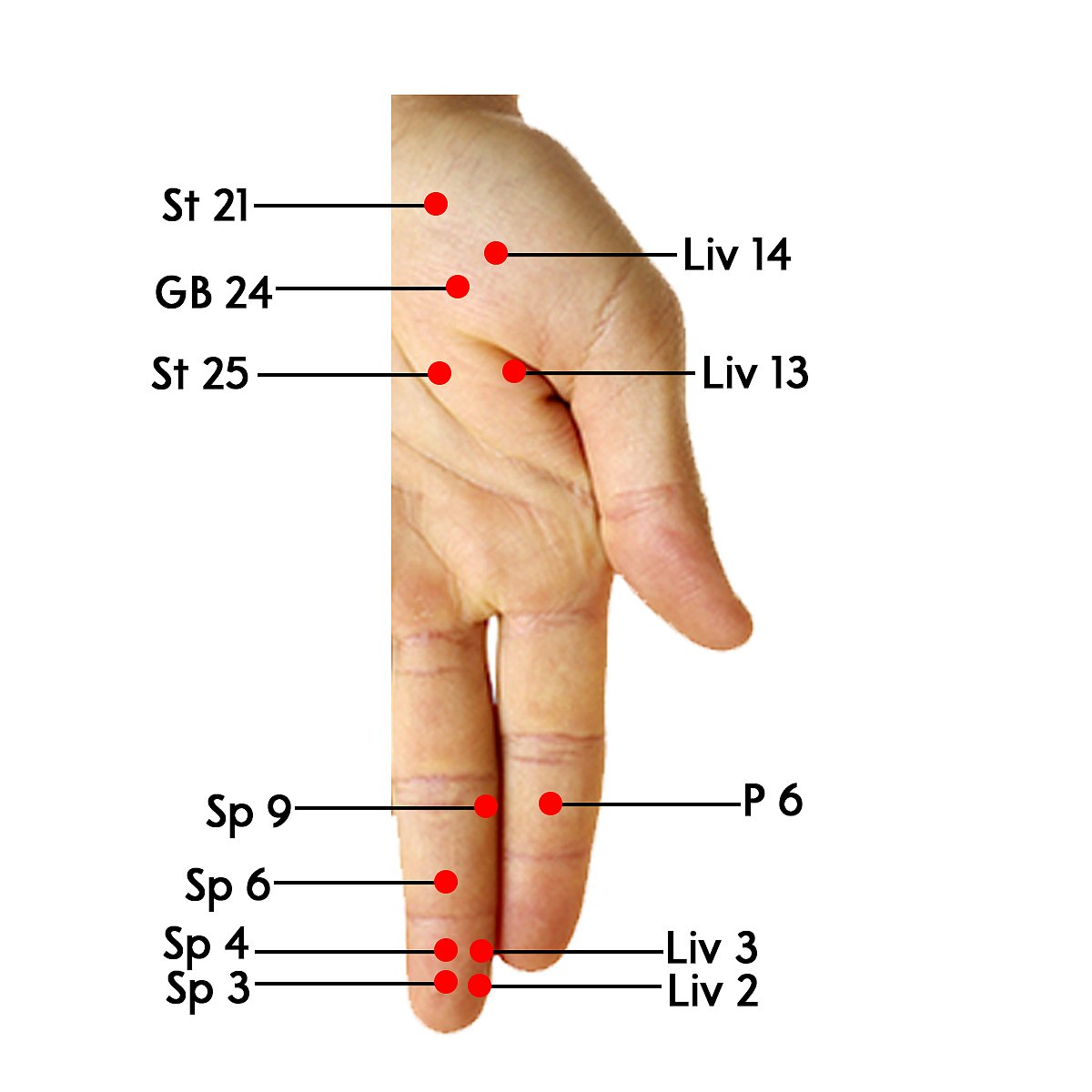
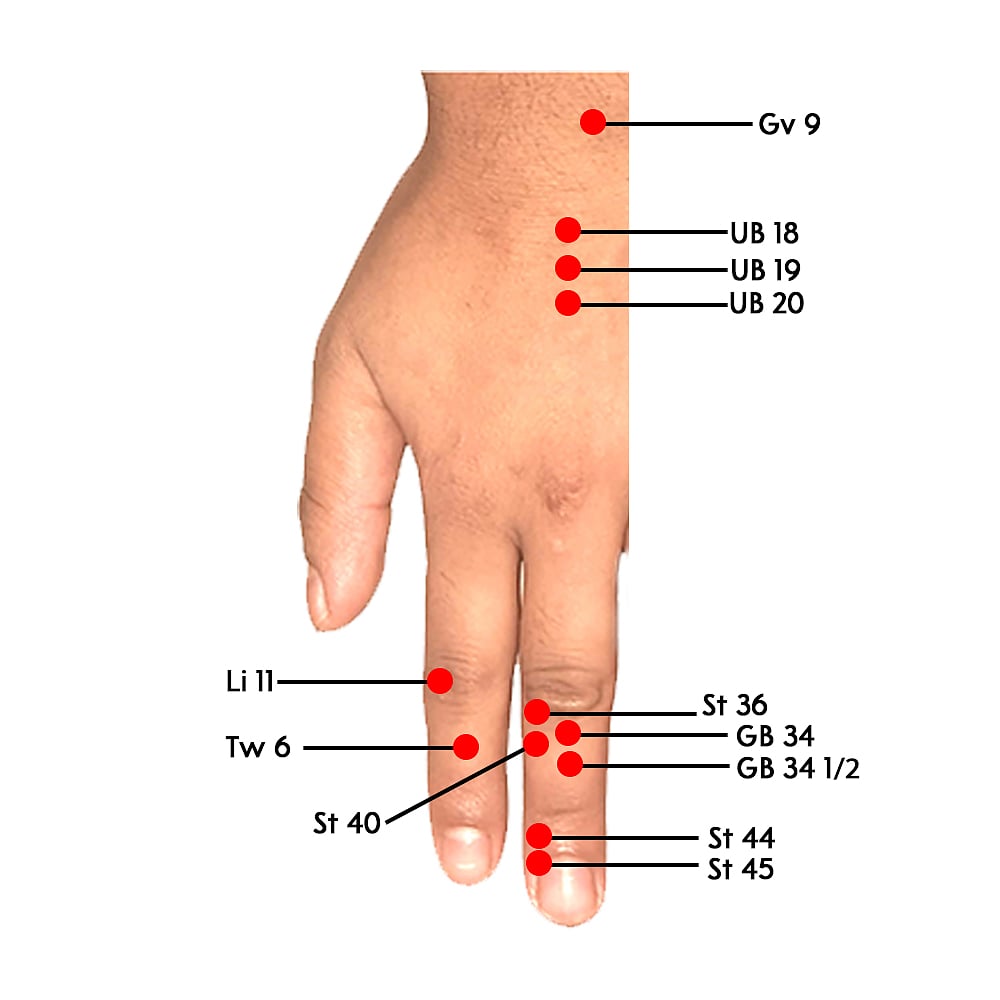
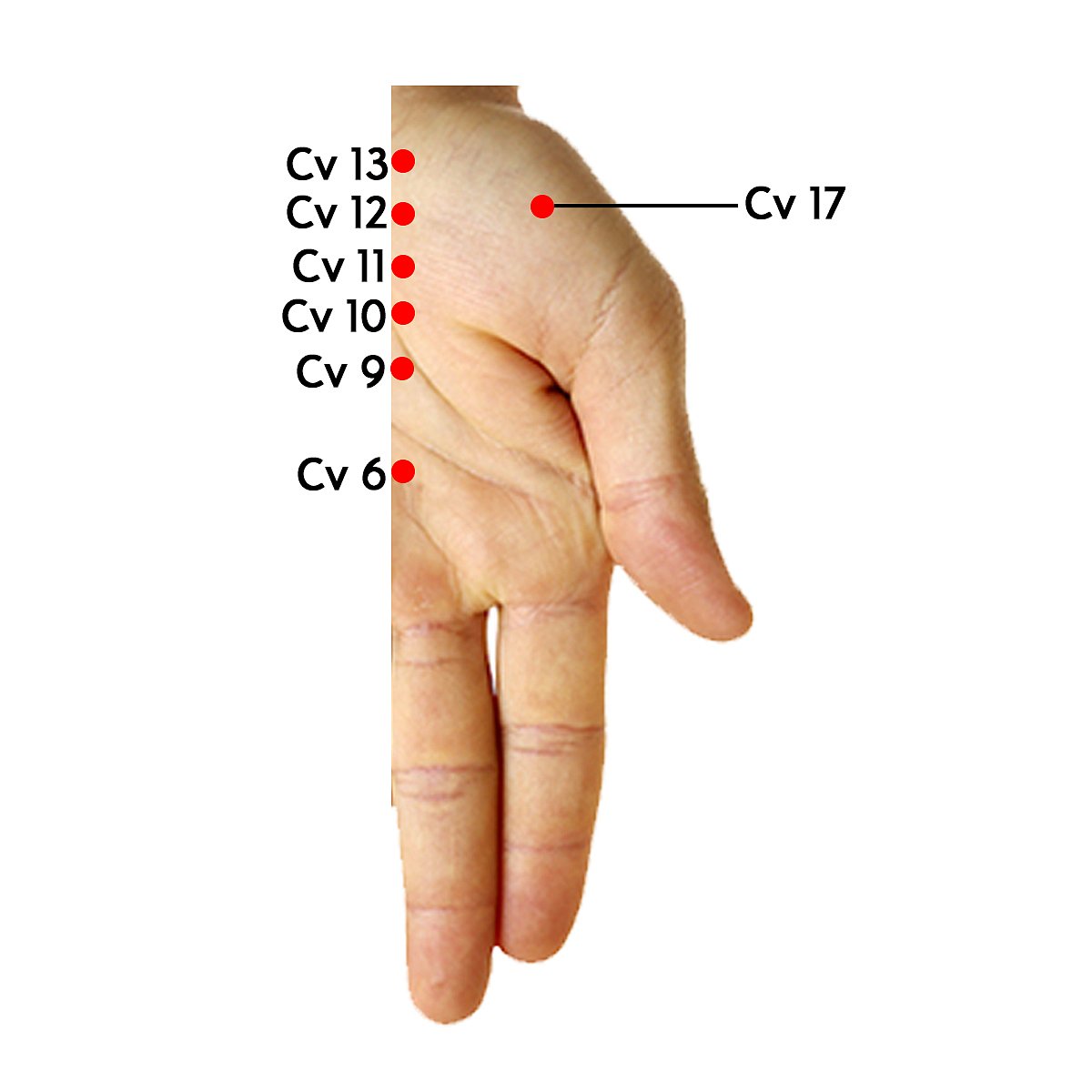
1. Vomiting food with gastritis & upset stomach.
Treatment: Sp 4, Sp 3, Cv 12, Zhong kuei
2. Vomiting clear water with mucous in stomach
Treatment: Sp 4, St 45, Cv 12 & Cv 14.
3. Vomiting that will not stop.
Treatment: Tw 5, H 7, H 9, Cv 27 & K 9.
4. Nausea & vomiting with
i) Fullness in chest ii) Diaphragm problem iii) Dizziness – Treatment: Sp 4, St 40, Cv 17, 5.
Nausea & vomiting due to deficient cold symptoms in spleen & stomach
Treatment: P 6, Sp 4, St 44, Cv 6 & Cv 12.
6. Persistent nausea with deficiency of the middle warmer
Treatment: P 6, P 8, Cv 6, Cv 12 & St 44.
7. Simple nausea
Treatment: P 6, St 36. Both P 6 & St 36 are specific points for the treatment of nausea.
8. If disease peaks nausea occurs. If vomiting occurs, disease subsides
Treatment: Sp 4.
9. Travel sickness (nausea & vomiting)
Treatment: GB 34.
10. Preventive Treatments of Nausea & Vomiting: Cv 24 prevents vomiting in females. St 12 prevents vomiting in males. Tw 19 prevents vomiting in children. Cv 12 is a special point to prevent & treat vomiting for males, females & children. And UB for treating nausea.
11.Ceaseless Vomiting – Treatment: K 6 & Lu 7.
12. If the vomiting is due to cold, and only water come out in vomiting, one may take hot food and water.
Treatment: P 6, Cv 13, Liv 13 & UB 20.
If the vomiting is due to pregnancy, the tongue is yellow or red, bad smell in vomiting. Treatment: P 6, St 36, Cv 121 & Cv 21.
Kindly contact if the problem persists.


